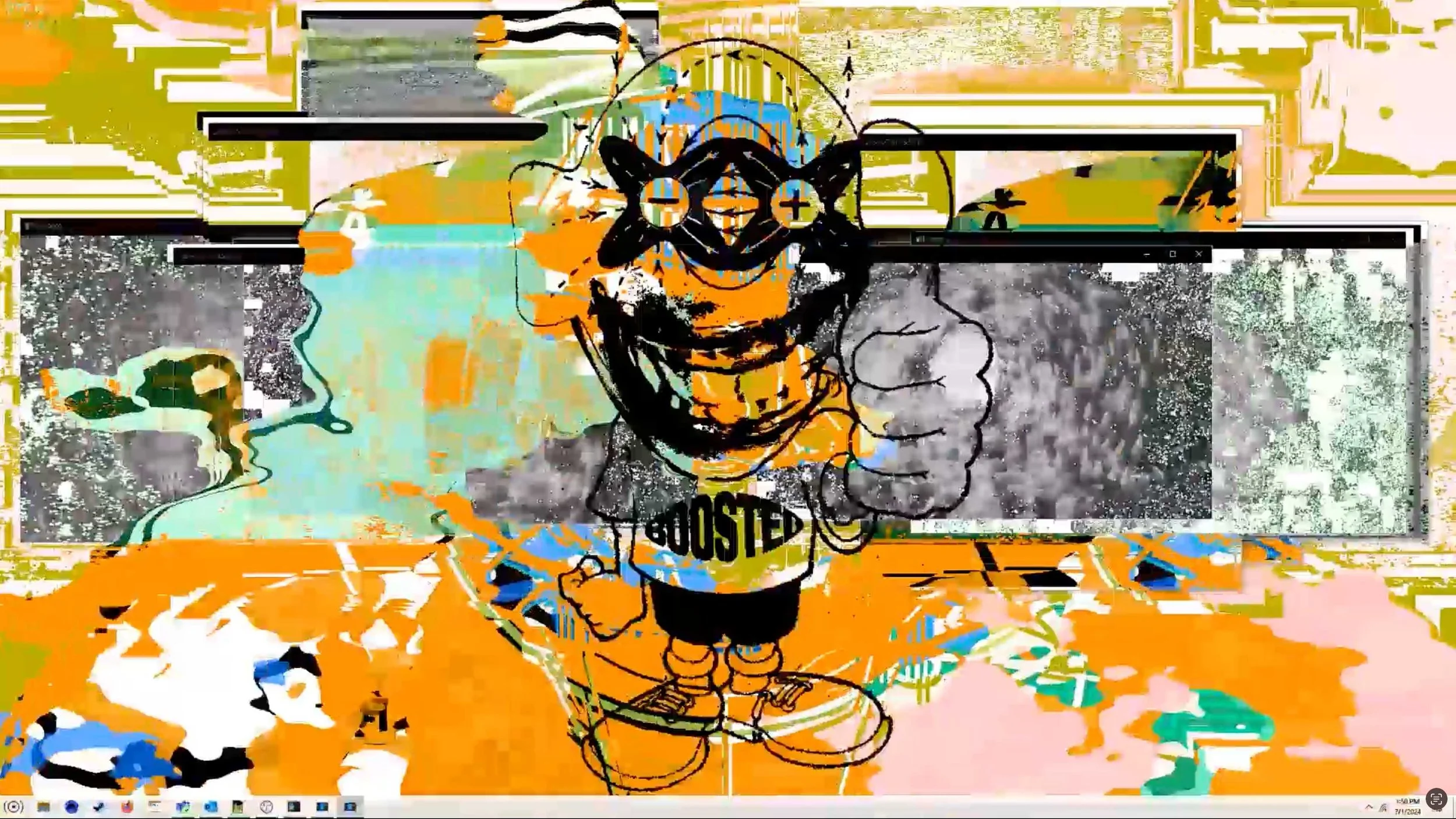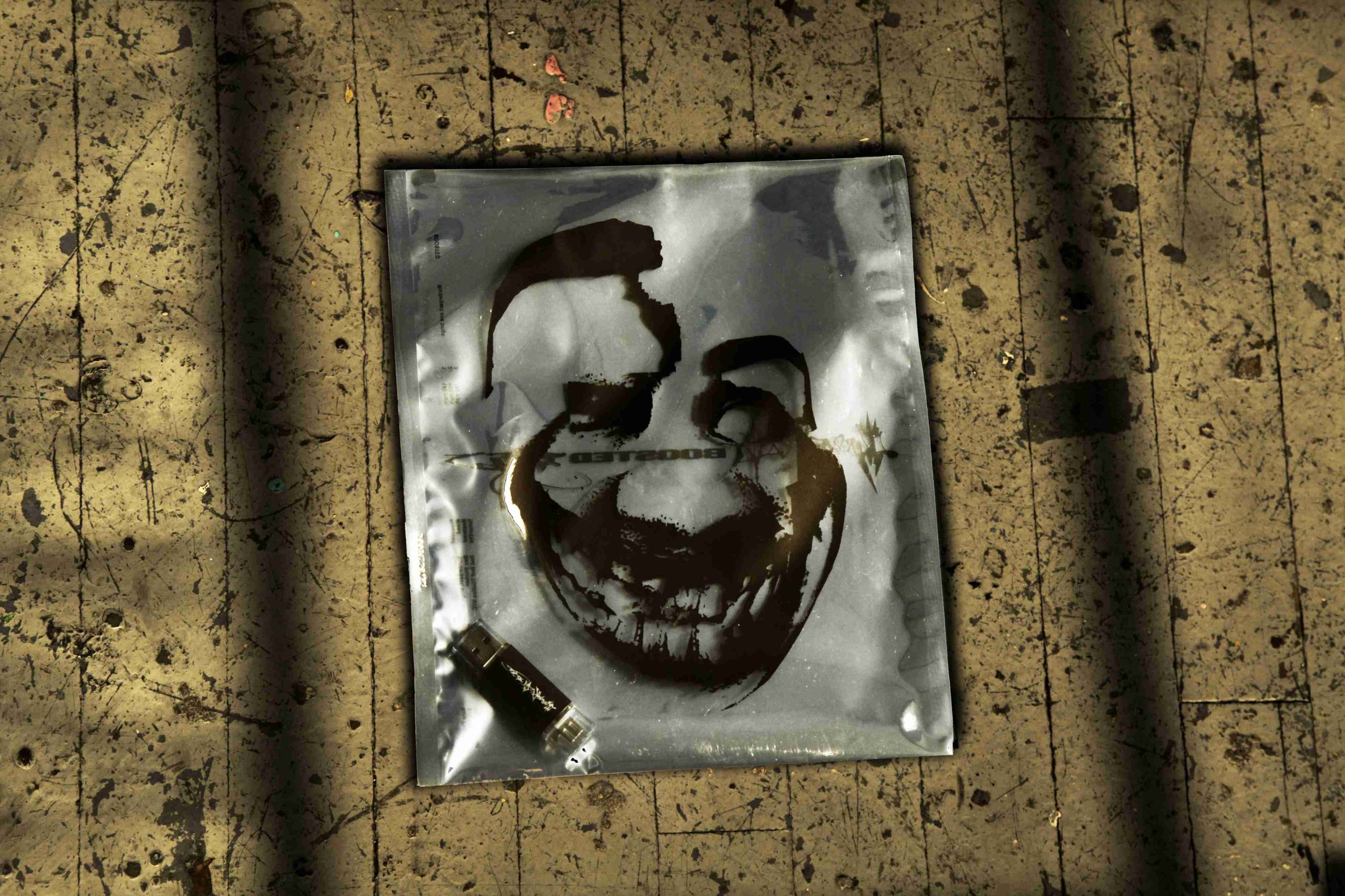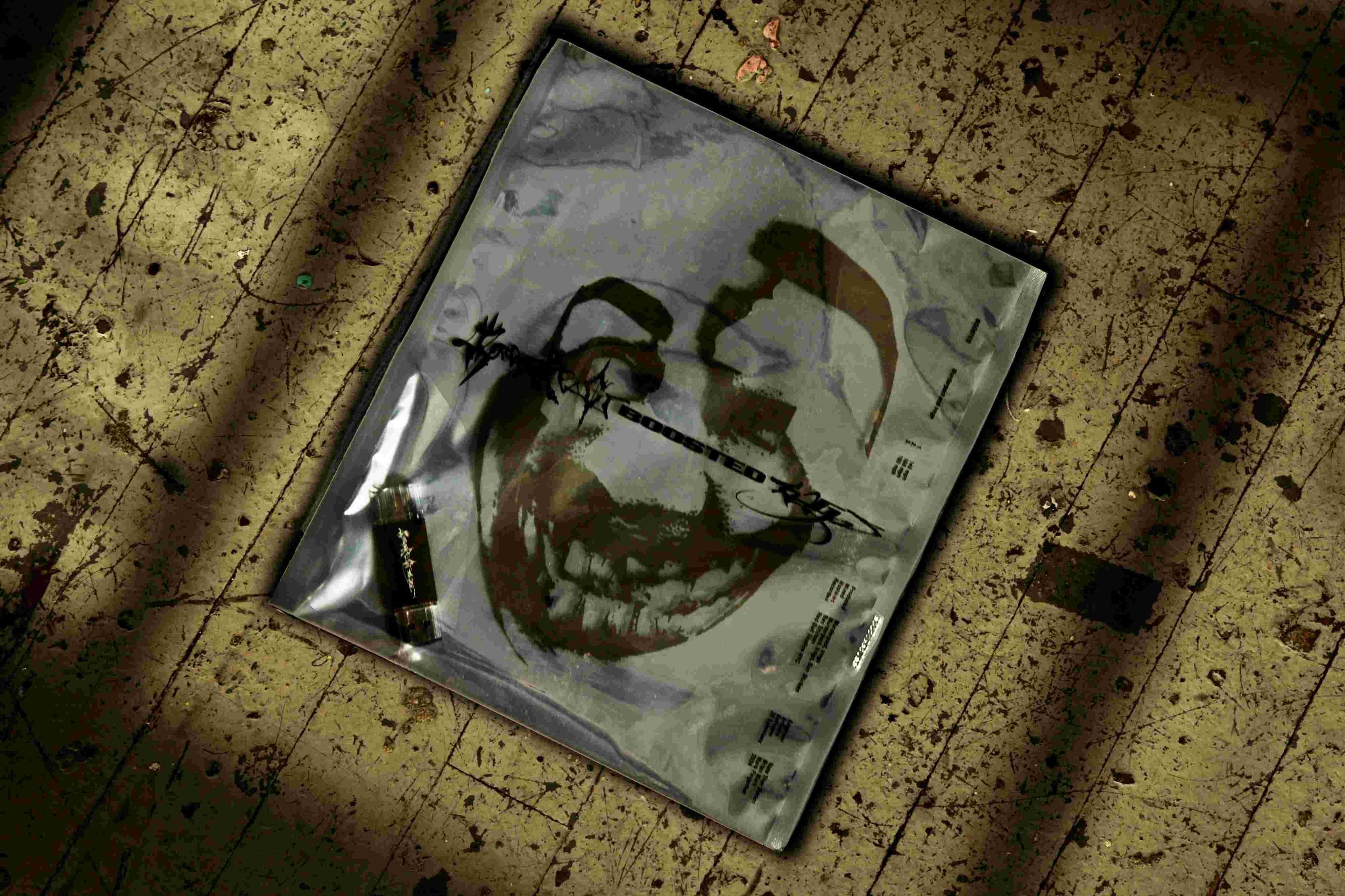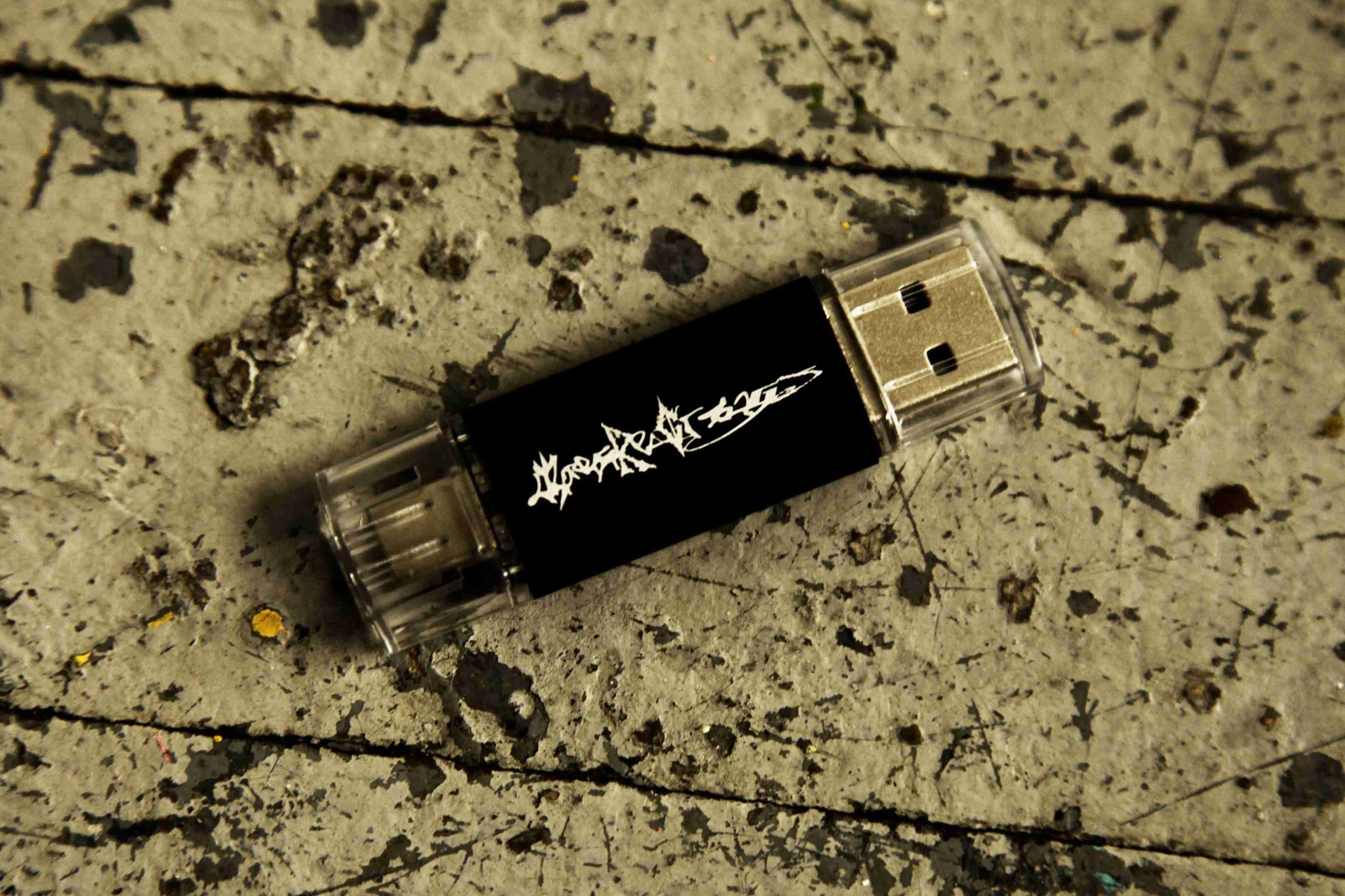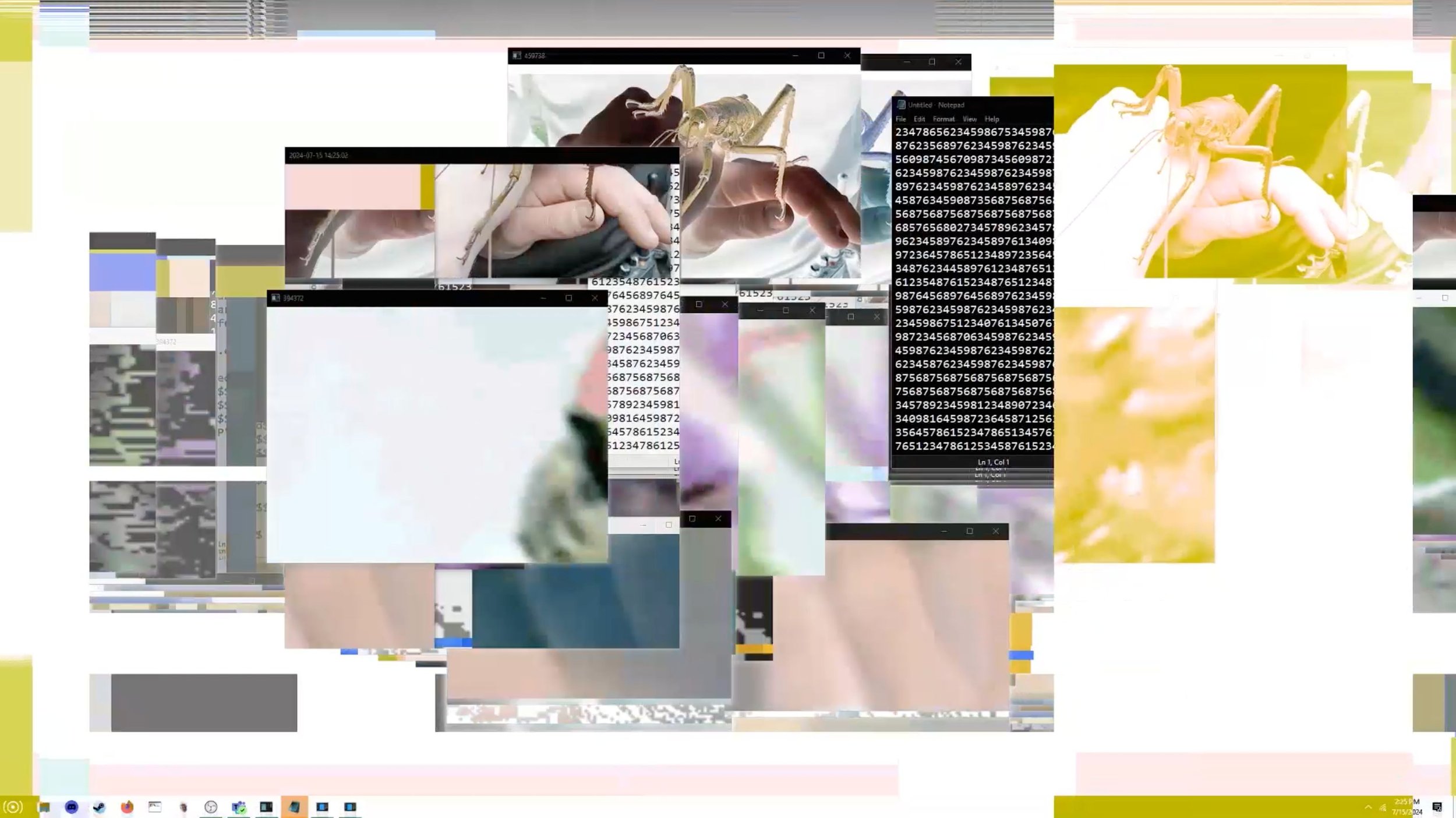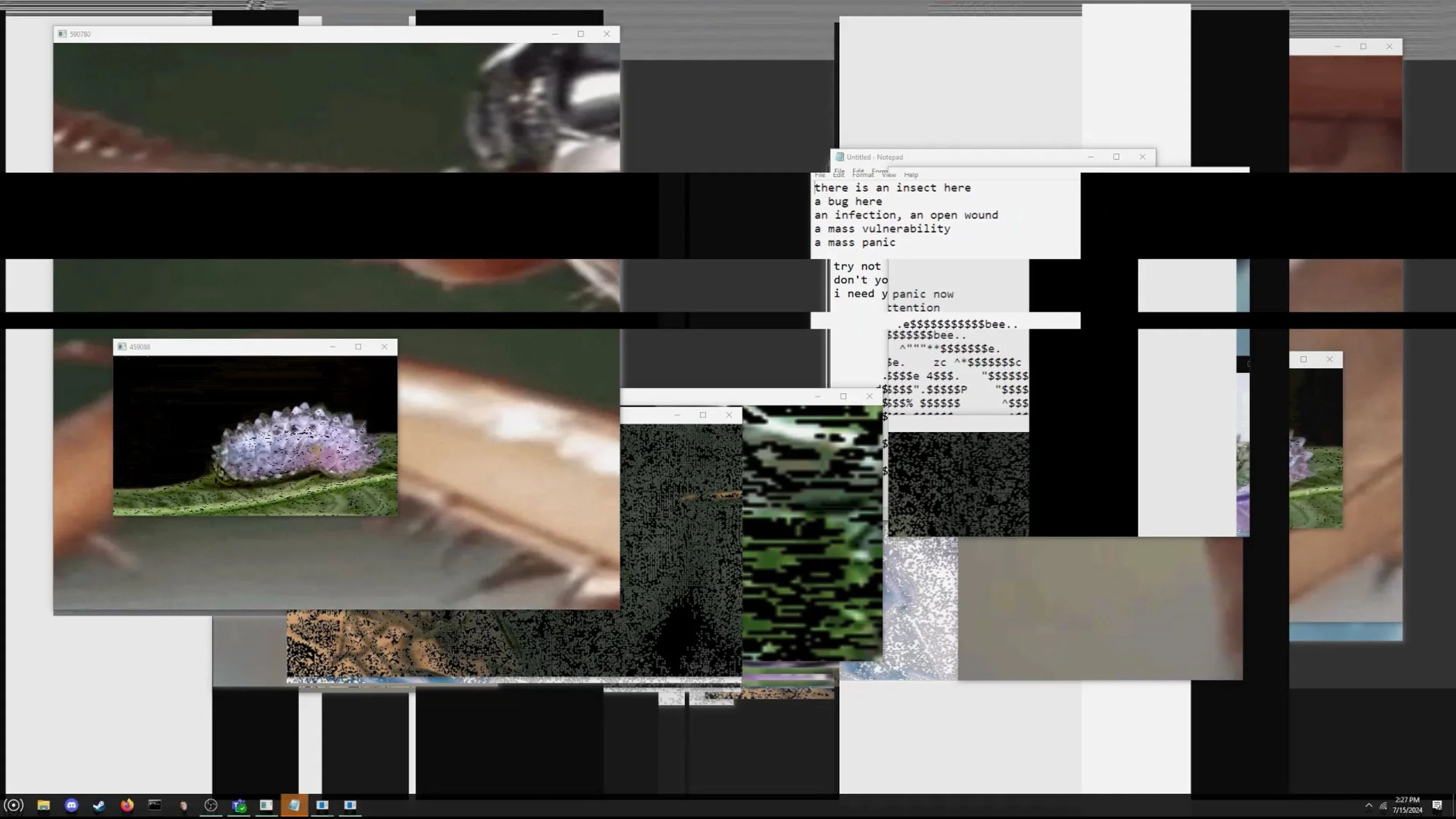BOOSTED BY MURDERPACT, TRNGS & MARK FINGERHUT
The audacious collaboration known as BOOSTED melds the talents of Brooklyn's MURDERPACT with the global data sorcery of TRNGS. Their connection, forged online in 2018, reached a creative zenith in 2020 when they converged at Red Bull Studios in New York. This convergence birthed BOOSTED—a masterpiece sculpted from incessant exchanges and transformations of recordings. The album is available in the form of a possessed flash drive, spawning a tightly orchestrated piece of malware programmed by Mark Fingerhut, resulting in a brutal software experience. At the end, the three audio files are deposited onto the user's desktop, along with some illustrations from designer Brian Mark.
Can you elaborate on how the concept for BOOSTED evolved during the pandemic, especially after the closure of Red Bull's studio and the subsequent global quarantine?
MURDERPACT: The plan had always been to take the material we had improvised in the studio and turn it into a longer-form piece, though at first I think it was supposed to be one song or mix, no longer than ten minutes (per the guidelines of the music publication which was to premiere it). I think the closure of red bull (in addition to the venue we worked at, and subsequently the series we were meant to take part in) ultimately freed up the situation, as we no longer had a deadline, release format or runtime limit for the release. With the quarantine we were suddenly left with a lot of time on our hands to work on it, and shifting the collaboration online felt like a natural extension of everything else that was having to go virtual at the time.
TRNGS: The pandemic happened almost immediately after the first studio sessions were held for the BOOSTED. In my eyes, the community fringes and bizarre symptoms of the NYC condition were totally accelerated after the pandemic started. Looking back, the era of stimmy checks, scam culture, anxiety, complete disorientation, and moving towards being even more terminally online influenced the album in a huge way. At that moment, I feel like most aesthetics were moving towards creating an antidote to the state of things but in my recollection I think we were at least subconsciously attempting to emulate that moment in the world.
How did the collaborative process between MURDERPACT and TRNGS shape the album's final sound, particularly with the diverse influences ranging from electroacoustic improvisations to futuristic power jazz?
TRNGS: Myself and John both have backgrounds in playing Jazz and Free Improvised music. But my project under the moniker TRNGS didn’t really involve that much improvisation. For the live session, I had to create an interface using a combination midi controllers, a Eurorack system, some generative patches, VSTs, etc. to try and achieve some amount of spontaneity for a live session.
MURDERPACT: Like Christian, I have a background in jazz/improvisational/live music as a drummer. At the time of the initial sessions I was a senior in a collegiate jazz program trying to square this practice with the growing love for DAW composition, electronic instruments and the studio process that playing in Murderpact had given me. I think starting from a place of live spontaneous composition with both acoustic and electronic elements, listening back, finding clear moments of synchronicity in the improvisations, and reshaping/developing them into their final form as dense electronic compositions in the DAW felt like a workflow where we could all employ each of our skillsets and aesthetic interests to the max.
The album is described as a "malevolent viral entity." How did this idea influence the creation of the unique malware component, and what challenges did you face integrating this with the music?
Mark Fingerhut: Well, the music is designed to kill, so I immediately felt that I had to take my software to a level I have never explored in the past. I would describe this as a lethal level: dense, unforgiving, uncompromising and unrelenting. Everything that modern desktop software is NOT. I would say the biggest challenge was definitely hitting all of the moments in the score, and composing that density across the software's runtime. I wanted to make sure I hit every moment, and let the music make the big compositional decisions for me. In a lot of ways I was just doing what the music told me to, subconsciously.
MURDERPACT: When we did the studio sesh, I remember feeling like we were in a space where artists like us weren’t typically meant to be; the idea of a few irreverent nerds taking advantage of such a pro studio to make music which was initially intended to fry the ears off of a music journalist felt like exploiting some sort of glitch in the system. I feel that whereas many digital artists would have gone for something minimal or conceptual, Mark’s software achieves a super physically engaging, visceral effect: this fit like a glove with the overall sense of the album, which had become an exercise in using hi-fi digital aesthetics to create music thats explosive, emotional, full of life and blood.
TRNGS: The concept of taking over the computer for a duration of time with this virus was really exciting to us; especially since computers are more and more becoming workplaces for people. It’s like running into an office and doing some guerilla harsh noise bomb. Just like occupying a professional space with something trolling and dysfunctional.
Given that BOOSTED incorporates a variety of visual elements, from insects to cosmic entities, how did artist Mark Fingerhut's vision align with the musical narrative of the album?
MURDERPACT: I think from our first meeting it was clear that Mark is a super deep listener who truly understands the record. The tracks each contain about 3 major movements, full of different events, developing themes and sounds that enter, exit and change like characters in a movie, and when talking through the project initially, it was clear Mark already saw the same sort of roadmap/screenplay for the album’s duration that we did. As Brian developed a design concept for the record (especially with the character of “Booster,” in his various forms), and we all discussed and collected various visual media to include in the software (low-res phenomena footage, crab preparation, reckless driving, insects, etc), Mark distilled the vibe so perfectly, expertly pairing these visual elements and themes with specific software operations. He would introduce and expand upon concepts in ways that felt so resonant and on point, it was clear that we could trust in his work and vision 200%.
Mark Fingerhut: I was pulling on imagery that to me felt right, in my gut. But for this software, the form and presentation definitely took center stage. If your computer is strobing, whirling, crashing, almost physically shaking, the content of the images matter much less than that tactile, almost spiritual experience. I approched this project as a primarily formal exploration into the outer extreme limit of desktop malware, and less as an exploration of pictoral themes. There are enough images out there, I feel. The music is so bodily, visceral, and immediate, so this felt like the right approach.
With the album's unique distribution via a possessed flash drive, how do you envision the audience's experience, especially considering the immersive and potentially unsettling nature of the software?
Mark Fingerhut: I think its theater, or an intentional mushroom trip. The set and setting matters a lot, and once it starts, you're in it. Thats by design, and a very large component of my malware work in general. My dream scenario is that the user settles down, maybe sips some tea or otherwise gets in the zone, dims the lights, empties their pockets and sits very close to the screen. The option to transcend through software is there, its right there in front of you with this, you just have to have a little bit of intention and you will receive the vision.
TRNGS: I really like the lore of distributing materials on flash drives. Similar to what I said above - it’s a pretty common cyber attack to throw a bunch of flash drives on the ground in the parking lot of some company and hope some employee grabs one and plugs it into the work computer. It’s a cool bridge between IRL / URL.
MURDERPACT: I hope that people find the software experience as beautiful as we do. A few times Mark likened it to the future of taking psychedelics, where people will one day be so fully joined with their PC that they’ll be downloading and running intense spiritua/emotional experiences as software. At the same time, I think the way the software takes away the user’s control of their computer for the album’s whole duration is a breath of fresh air; in a way it feels like a new form of vinyl record, forcing the listener to sit and engage with the 30+ long work, but in an environment where they are usually in total control and distracted, quickly scrolling through a million things per second and scrubbing through 3-minute songs.
The decision to divide the album into three specific BPMs—140, 160, and 180—seems intentional. How do these tempo choices contribute to the overall atmosphere and flow of BOOSTED?
TRNGS:
The album to me feels like a machine. It’s running this fluid, intricate procedure with different moving parts. I think in order to have three different tracks, we needed to just alter the tempo and see how the speed would affect this machine and how we would react to the speed.
Murderpact: The idea of bpms were decided upon before the initial recording session; we had linked up a few times before the session and had decided to midi-clock-sync all of our gear and choose a few different bpms to jam on. As a drummer i personally find it very freeing to improvise with a metronome, and I remember thinking that those BPMS were sort of staple, boilerplate speeds; there are countless styles/genres that can easily be referenced within each of them (lots of techno/club music sits around 140, most footwork/juke around 160, etc), which made them good springboards for improvisation and post-production/composition; I think the songs each cover a lot of ground stylistically, which probably comes from trying to incorporate various movements/themes on one grid; there are definitely sections that were love letters to specific styles. Regardless, the bpms were never a strict boundary, so a fair chunk of the record isn’t on the grid at all. There was also a long, messy 120bpm jam that didnt make it on the record; maybe if we can find and revisit those files it could be fuel for a sequel ?
Production: Hampton Albert, John Bemis, Christian Cahill
Mixing / Mastering: Ben Shirken
Software: Mark Fingerhut Artwork
USB design: Brian Mark
BOOSTED.exe available to purchase at 29s.world
What to read next


